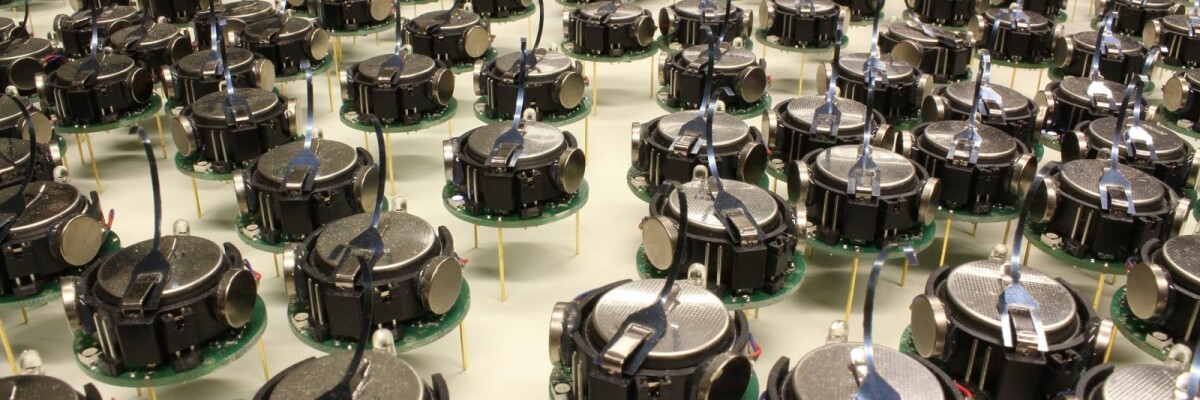Researchers from MIT, Harvard, Cornell and Columbia Universities have created "robotic particles" that are useless on their own, but are capable of many things when they are put together – in this they resemble a bee swarm.
We usually perceive robots as independent mechanisms capable of performing tasks on their own. But American scientists have demonstrated a fundamentally different approach in robotics, creating so-called «particle robots».
Each particle is a small spherical mechanism equipped with a motor, a microcontroller, a battery, a light sensor and a magnet.
When combined, robots form a «swarm» that can take various shapes. In this state, the mechanisms can transport objects along aisles of any complexity as they move towards light sources. The «swarm» moves by the impetus of each «bee» as individual robotic particles expand and contract from 15 to 23 cm.
The development has already proven its effectiveness in testing. In future, the researchers intend to reduce the particle size. They believe that, the more particle robots they have, the more complex tasks they can perform. The researchers aim to create an installation comprised of 1 million mechanisms.
Share this with your friends!





Be the first to comment
Please log in to comment